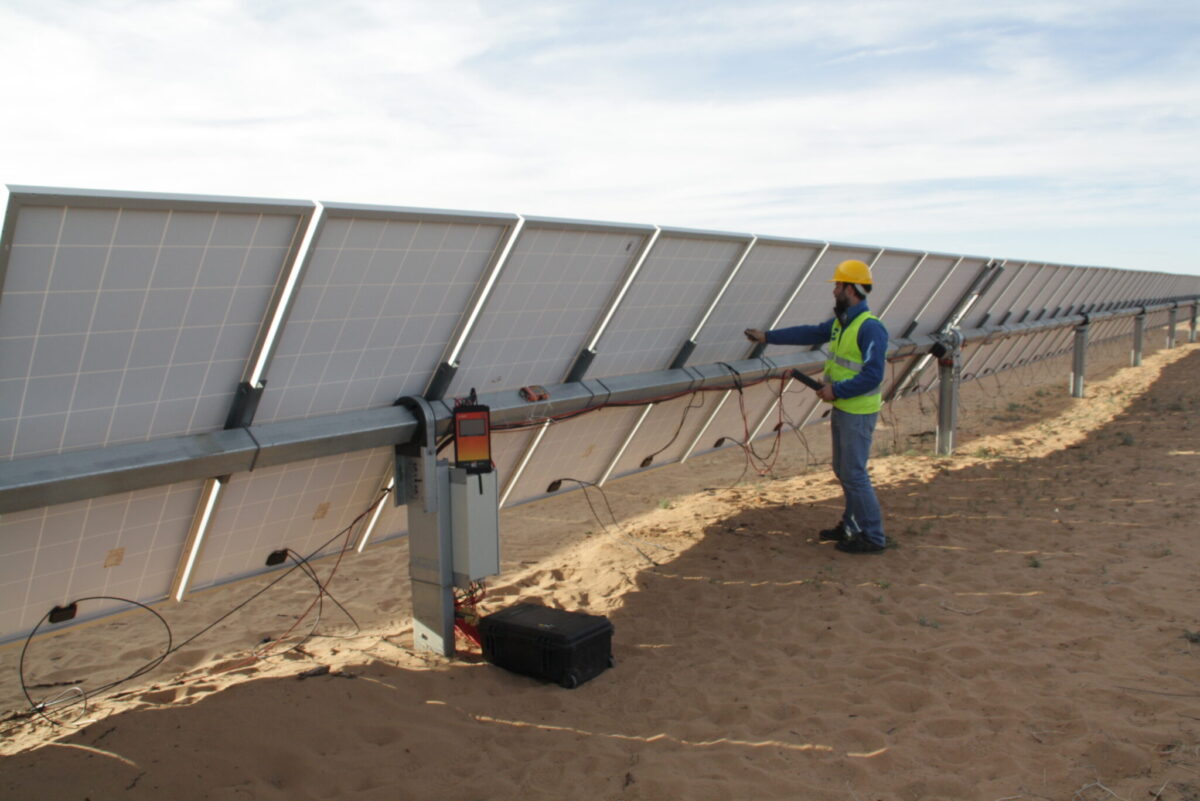From pv magazine Global
A Spanish research team developed a measurement method to measure standard test condition (STC) of PV module power in the field with lower levels of uncertainty compared to conventional methods, which may have implications to improve productivity for operations and maintenance (O&M) teams performing quality control assessments.
The new approach eliminates the need for removing and reinstalling the tested PV modules from their operating positions, which the scientists describe as a “cumbersome and expensive task and represents a risk for the physical integrity of the modules.”
The procedure entails using a reference module and taking into consideration the temperature differences between the reference and the tested module. It involves two radio-linked I-V tracers to simultaneously measure I-V curves and temperature measurements at the centres of both the reference and the tested modules.
The scientists conducted seven testing campaigns at commercial PV plants. Measurements were carried out on over 7000 I-V curves on 600 PV modules. The resulting estimated uncertainties are slightly higher than those corresponding to high-quality solar simulators, but still low enough to meet strict quality control requirements, according to the researchers.
“We are able to apply very low-uncertainty measurements of PV modules in the field, which paves the way for accomplishing degradation measurements directly by the O&M teams of PV plants and on a regular basis,” Rodrigo Moretón, CEO of Spanish photovoltaic engineering and consultancy firm Qualifying Photovoltaics (QPV), told pv magazine.
The results from these testing campaigns suggested that four testing rounds, delayed at least 2 hours, resulted in average expanded uncertainties in STC power of about 1.3% for the average power of a sample of modules, according to the researchers. The uncertainty in single module values was twice as large but still sufficient to detect anomalous defective or underrated modules.
“The results have been validated against those obtained by an accredited lab with a mobile flash, obtaining similar standard deviation values (<1%), which entails a further confirmation of the procedure validity,” said the research team.
The researchers also claimed the instrumentation allowed over 500 measurements to be taken per day, provided the modules were previously cleaned and disconnected from the PV array so that terminals could be easily accessed. “This represents more than twice the numbers currently achieved with mobile solar simulators,” stated the researchers.
The research team comprised scientists from QPV, Universidad Politécnica de Madrid (UPM) and Spanish renewable energy company Acciona Energia. Its findings are available in the paper “On outdoor testing procedures of large samples of PV modules,” published in Progress in Photovoltaics.
This content is protected by copyright and may not be reused. If you want to cooperate with us and would like to reuse some of our content, please contact: editors@pv-magazine.com.








By submitting this form you agree to pv magazine using your data for the purposes of publishing your comment.
Your personal data will only be disclosed or otherwise transmitted to third parties for the purposes of spam filtering or if this is necessary for technical maintenance of the website. Any other transfer to third parties will not take place unless this is justified on the basis of applicable data protection regulations or if pv magazine is legally obliged to do so.
You may revoke this consent at any time with effect for the future, in which case your personal data will be deleted immediately. Otherwise, your data will be deleted if pv magazine has processed your request or the purpose of data storage is fulfilled.
Further information on data privacy can be found in our Data Protection Policy.